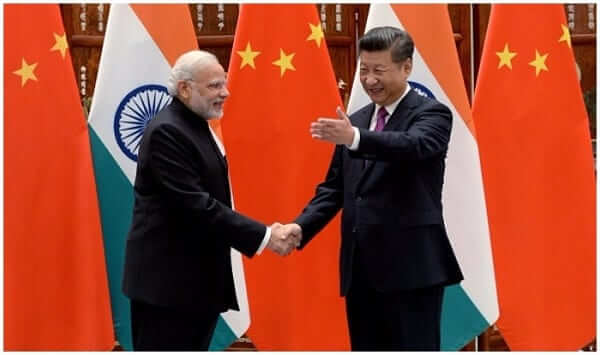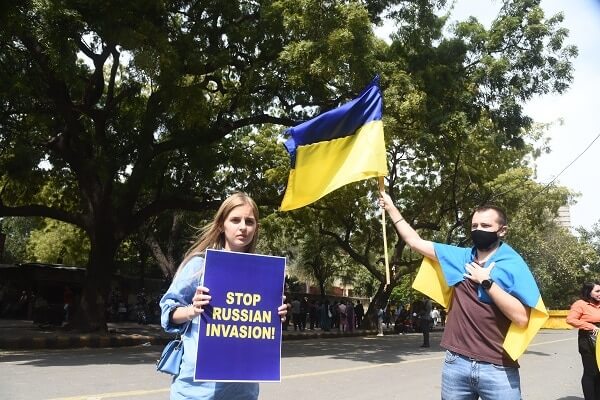In a world awash with narratives about Trump, Zelenskyy, Russia, NATO and the EU, it is easy to overlook perspectives that could enhance our understanding of the war clouds gathering today. Mainstream debate focuses on the interplay of a few actors, ignoring others.
China and India: The EU’s new dates?
As American politics veers towards a diametrically opposite stance from the past 80 years, China appears ready to capitalise on shifting global dynamics – especially in Europe. Since at least 2020, Beijing has been pushing for European strategic autonomy. In the last month, Europe has reciprocated, and sought a thaw in its relationship with China. Separately, it has committed to a free-trade agreement with India by the end of 2025. If completed, the India-EU trade agreement would be the largest of its kind.

Dangers of Appeasement: Insights from Australia
Historical parallels also provide a cautionary lens on today’s diplomacy. Comparisons between President Trump’s approach to Russia and the appeasement policies epitomised by the 1938 Munich Agreement have begun circulating, as highlighted by The Australian. The suggestion is that concessions to avoid conflict might embolden potential aggressors, allowing them to dictate terms. This could pave the way for future, bigger escalations, and render NATO even more impotent than it already is. NATO, founded in 1949 with a promise of collective defense against Soviet advances, has long held that an armed attack against one is an attack against all, underpinning a framework that assures mutual protection. Yet a deeper inspection reveals a two-tiered commitment: while member states are expected to allocate at least 2% of their GDP to national defense, many have failed to do so. Are defaulters entitled to protection? Trump Ukraine WW3 Analysis
Furthermore, should Ukraine, which is not a NATO member, receive support under this alliance at all? Also, how can the EU, which cannot even meet its 2% commitment for the most part, even dream of supporting Ukraine on its own?

Justification for Ukraine’s security
Ukraine’s security assurances were not enshrined in any collective defense commitments but came about through non-binding promises in the Budapest Memorandum on Security Assurances. Russia, which signed the memorandum and promised to honour Ukraine’s borders in 1994, has been in continuous and clear violation since then. This is clearly a massive betrayal of the Ukrainian people.
Europe’s broken polity
The internal divisions within the EU further complicate the West’s unified response to external threats. French President Emmanuel Macron’s recent attempts to rally European nations towards a single defense strategy underscore growing tensions. The extent of military support for Ukraine reveals fissures. They reflect historical legacies, economic priorities, and national security doctrines that vary greatly from one nation to another. Coupled with these institutional challenges is the ever-evolving influence of public opinion. In many EU and US countries, domestic discontent over prolonged conflicts and economic strains shapes foreign policy, adding another layer of complexity to international decision-making arenas. Trump Ukraine WW3 Analysis
National and international media biases
Media narratives also play a role in shaping perceptions and policy decisions. They set agendas, dictate what the public perceives as priorities and influence how national leaders approach crises. For instance, while Trump’s rhetoric dominates world news cycles, the quieter stories of strategic shifts in Europe or Asia remain largely in the background. This imbalance not only distorts public understanding but might also obscure critical discussions on other security strategies and defense spending obligations that are fundamental to understanding the bigger picture.
The India wildcard – the bigger picture
Finally, an emerging viewpoint comes from India, a nation frequently sidelined in Eurocentric discussions. India’s Foreign Minister, S. Jaishankar, famously stated that “Europe has to grow out of the mindset that its problems are the world’s problems, but the world’s problems aren’t Europe’s problems”. This shows a call for a more balanced outlook, with equal urgency to crises worldwide. As such, Western preoccupations with Ukraine and Russia might benefit from recalibration: instead of looking at one conflict, a more inclusive global framework would address security challenges across multiple regions simultaneously. This way, an overly-deep focus on one area will not catch the world unawares if other nuclear flashpoints (think Middle East, Korea or India-Pakistan) or long-standing wars (Myanmar, Sudan, etc.) suddenly explode.
Conclusion
Popular narratives about current global political dynamics have centered on a small set of actors, yet other perspectives also matter.
Examining China and India’s moves, drawing historical lessons from appeasement, dissecting internal EU divisions, scrutinizing the influence of media, and incorporating India’s global vision will deepen our understanding of the complexities and help us adapt our strategies if we want to avoid WW3. Trump Ukraine WW3 Analysis
Read more: Modi’s US visit: The reality behind the hype




